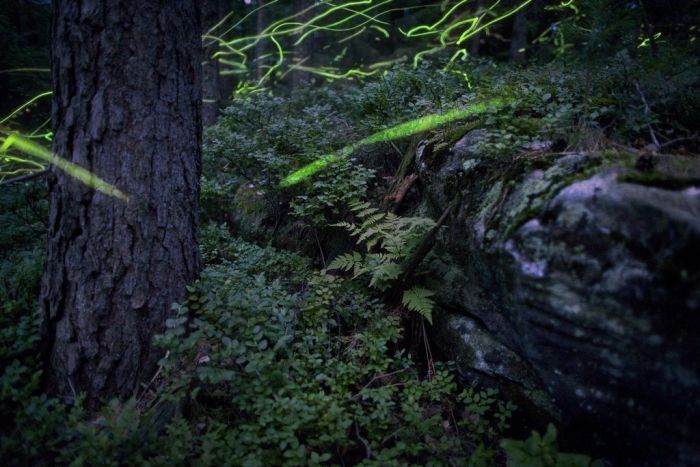|
|
Fireflies In The Night
|
Light production in fireflies is due to a type of chemical reaction called bioluminescence. This process occurs in specialised light-emitting organs, usually on a firefly's lower abdomen. The enzyme luciferase acts on the luciferin, in the presence of magnesium ions, ATP, and oxygen to produce light. Genes coding for these substances have been inserted into many different organisms. Firefly luciferase is used in forensics, and the enzyme has medical uses - particularly for detecting the presence of ATP or magnesium. Renaissance painters used a powder of dried fireflies to create a photosensitive mixture. Caravaggio may have used this powder in his uniquely lit paintings. All fireflies glow as larvae. Bioluminescence serves a different function in lampyrid larvae than it does in adults. It appears to be a warning signal to predators, since many firefly larvae contain chemicals that are distasteful or toxic.
It is thought that light in adult beetles was originally used for similar warning purposes, but evolved for use in mate selection. Now fireflies are a classic example of an organism that uses bioluminescence for sexual selection. They have evolved a variety of ways to communicate with mates in courtships. From steady glows, flashing, as well as the use of chemical signals unrelated to photic systems. Some species, especially lightning bugs of the genera Photinus, Photuris and Pyractomena, are distinguished by the unique courtship flash patterns emitted by flying males in search of females. Females of the Photinus genus generally do not fly, but do give a flash response to males of their own species.
|
|









